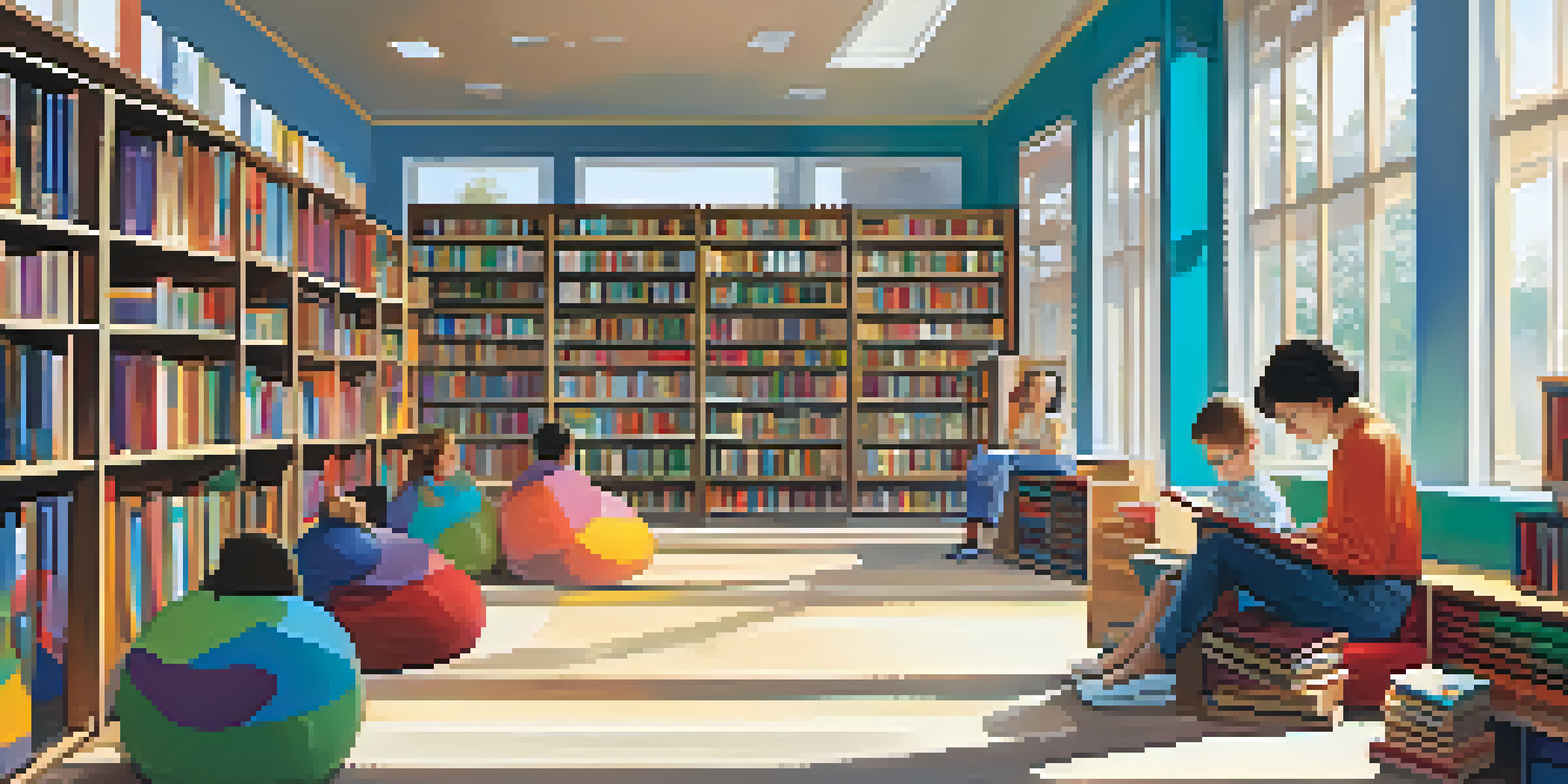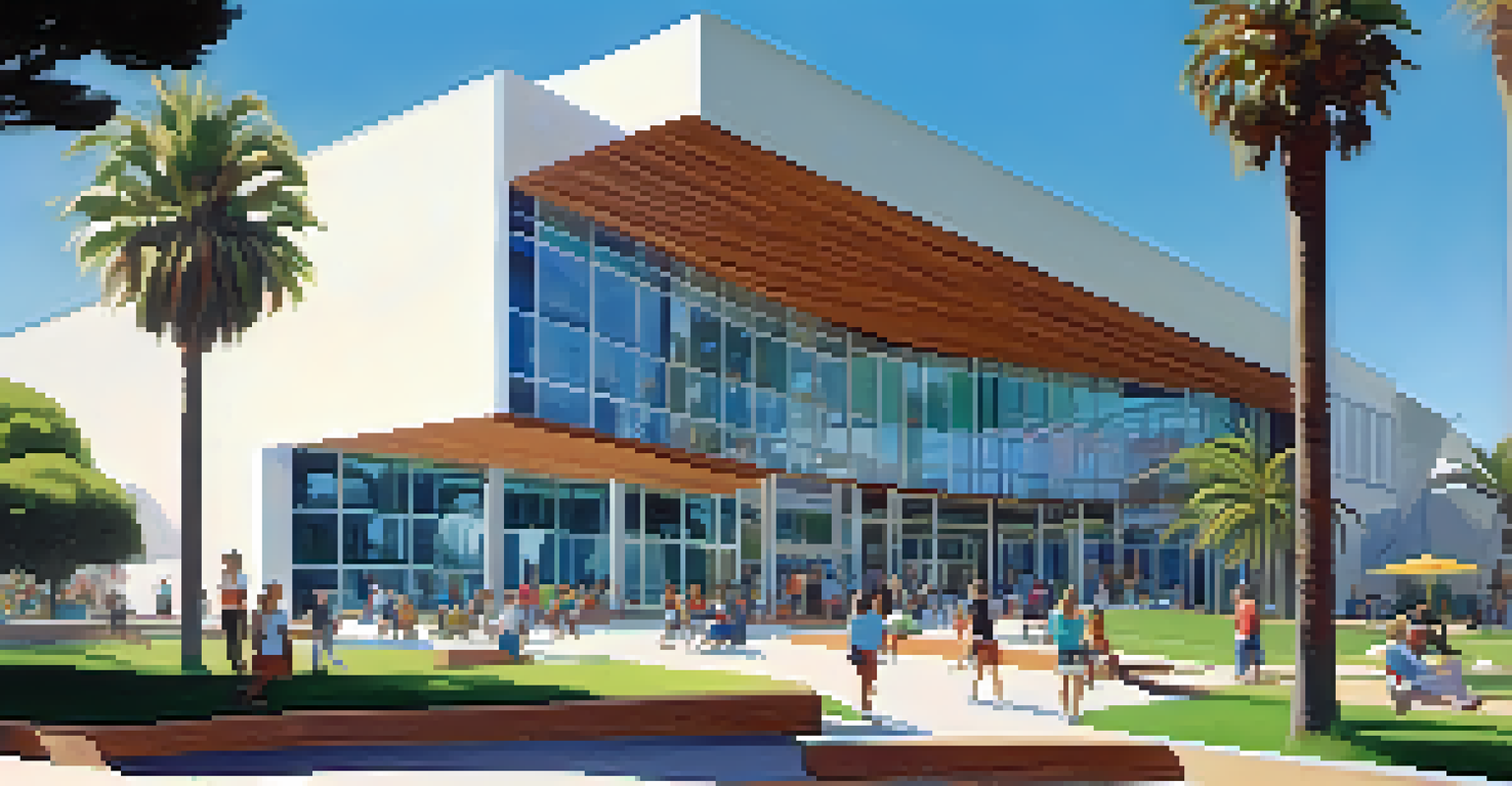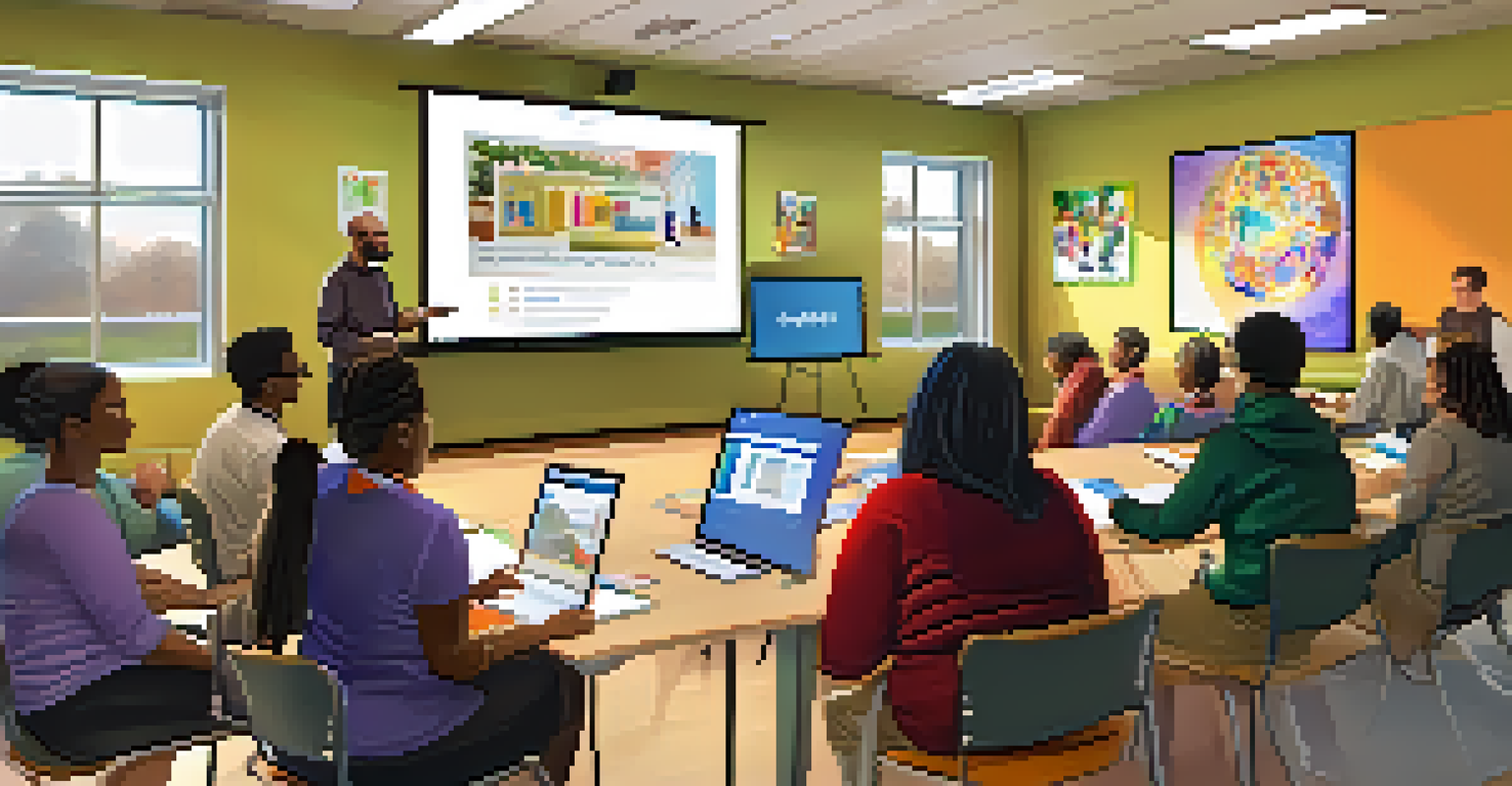Exploring the Rich History of Santa Monica's Public Libraries

The Origins of Santa Monica's Public Library System
Santa Monica's public library system began its journey in the late 19th century, reflecting the city’s commitment to education and community. The first library opened in 1890, housed in a modest building that served as a gathering place for residents eager to access books and knowledge. This early establishment laid the groundwork for a robust library system that would evolve over the decades.
A library is not a luxury but one of the necessities of life.
As the population of Santa Monica grew, so did the need for more extensive library services. In 1906, the library moved to a larger facility, which not only accommodated more books but also provided space for community events and meetings. This expansion marked a significant milestone, as it demonstrated the city's dedication to fostering a love for reading and learning among its citizens.
The library's historical roots are a testament to the resilience of the community, as it quickly became a vital resource for information and culture. The commitment to providing access to literature and learning opportunities has shaped the library's identity, making it a cherished institution in Santa Monica.
Architectural Evolution: From Function to Aesthetic
Over the years, the architecture of Santa Monica's libraries has mirrored the changing tastes and needs of the community. The original library building showcased a simple design, focusing on functionality over form. However, as the community's aspirations grew, so did the architectural ambition of the library spaces.

In 1962, a new main library was constructed, featuring modernist design elements that reflected the era's architectural trends. This shift not only provided a more inviting atmosphere for patrons but also emphasized the importance of libraries as community hubs. The design aimed to blend seamlessly with Santa Monica's coastal environment, creating a welcoming space for all.
Santa Monica's Libraries Evolve
The libraries have transformed over the years, adapting their architecture and services to meet the community's changing needs and aspirations.
More recently, renovations and expansions have incorporated sustainable practices and innovative designs, showcasing a commitment to both the environment and the community’s evolving needs. These changes ensure that Santa Monica’s libraries remain relevant and engaging, continuing to inspire generations of readers and learners.
The Role of Libraries in Community Engagement
Santa Monica's public libraries have long been more than just places to borrow books; they serve as vital community centers. From hosting workshops and educational programs to providing meeting spaces for local groups, libraries play an essential role in fostering community engagement. They have become the heartbeat of the community, bringing together residents from diverse backgrounds.
The function of the library is to serve the community, to offer a place where everyone can learn, grow, and connect.
These libraries offer a variety of programs aimed at children, teens, and adults, focusing on literacy, technology, and the arts. For instance, storytelling sessions for children spark imagination, while technology classes help adults navigate the digital world. This broad array of offerings ensures that everyone in the community can find something of interest.
Moreover, the libraries actively collaborate with local organizations to address community needs, such as providing resources for job seekers or hosting cultural events. This collaborative spirit not only enhances the library's offerings but also strengthens the bonds within the community.
Preserving History: The Role of Archives
An often-overlooked aspect of Santa Monica's public libraries is their role in preserving local history. The libraries maintain extensive archives that house historical documents, photographs, and memorabilia, providing invaluable resources for researchers and history enthusiasts. This commitment to preservation ensures that the rich narrative of Santa Monica is not lost to time.
These archives tell the stories of past generations, capturing moments that shaped the community. From early settlers to the vibrant cultural movements of the 20th century, the historical records offer a glimpse into the lives of those who came before us. They serve as a reminder of the city's evolution and the diverse experiences that have contributed to its character.
Community Engagement at its Core
Santa Monica's public libraries serve as vital community centers, offering various programs and resources that foster engagement and collaboration among residents.
Additionally, the libraries often host events that celebrate local history, encouraging residents to engage with their heritage. Whether through lectures, exhibitions, or guided tours, the libraries play a crucial role in connecting the present with the past, fostering a deeper understanding of Santa Monica's unique identity.
Technological Advancements: Libraries in the Digital Age
As technology continues to evolve, so too do the services offered by Santa Monica's public libraries. Embracing the digital age, the libraries have expanded their collections to include e-books, audiobooks, and online databases, making information more accessible than ever. This transition reflects a broader trend in libraries adapting to the changing needs of their patrons.
The libraries also provide essential digital literacy programs, equipping community members with the skills needed to navigate the online landscape. From teaching basic computer skills to more advanced topics like coding, these programs empower individuals to thrive in an increasingly digital society. This focus on technology ensures that the libraries remain relevant and valuable resources.
Moreover, the libraries have embraced social media and online platforms to engage with the community, creating a virtual space for discussions and events. This innovative approach not only broadens the reach of library services but also fosters a sense of community in the digital realm.
Fostering Lifelong Learning and Literacy
One of the core missions of Santa Monica's public libraries is to promote lifelong learning and literacy. Through a variety of programs and resources, the libraries encourage individuals of all ages to explore new interests and develop their skills. This commitment to education is evident in the diverse offerings available to the community.
For children, early literacy programs aim to ignite a love for reading from a young age, laying the foundation for academic success. These initiatives often include interactive storytimes, reading challenges, and summer reading programs that keep young minds engaged. By prioritizing literacy, the libraries help to cultivate a generation of enthusiastic readers.
Preserving Local History
The libraries play a crucial role in preserving Santa Monica's history through extensive archives that capture the community's rich narrative and heritage.
For adults, ongoing education is supported through workshops, book clubs, and access to online learning platforms. Whether it's learning a new language, enhancing job skills, or exploring creative writing, the libraries provide a supportive environment for personal growth. This focus on lifelong learning reinforces the idea that education is a continuous journey, accessible to everyone.
Looking Ahead: The Future of Santa Monica's Libraries
As we look to the future, Santa Monica's public libraries are poised to continue their evolution in response to community needs. Plans for further expansions and enhancements suggest a commitment to staying modern and relevant in an ever-changing world. This forward-thinking approach positions the libraries as essential resources for generations to come.
The integration of new technologies and innovative programs will play a significant role in shaping the libraries' future. By prioritizing community input and adapting to emerging trends, the libraries can ensure they meet the diverse needs of all patrons. This adaptability is crucial in maintaining their status as community hubs.

Ultimately, the future of Santa Monica's libraries will be defined by their ability to foster connections, promote literacy, and provide access to information. As they continue to serve the community, these libraries will remain vital spaces for learning, discovery, and connection.